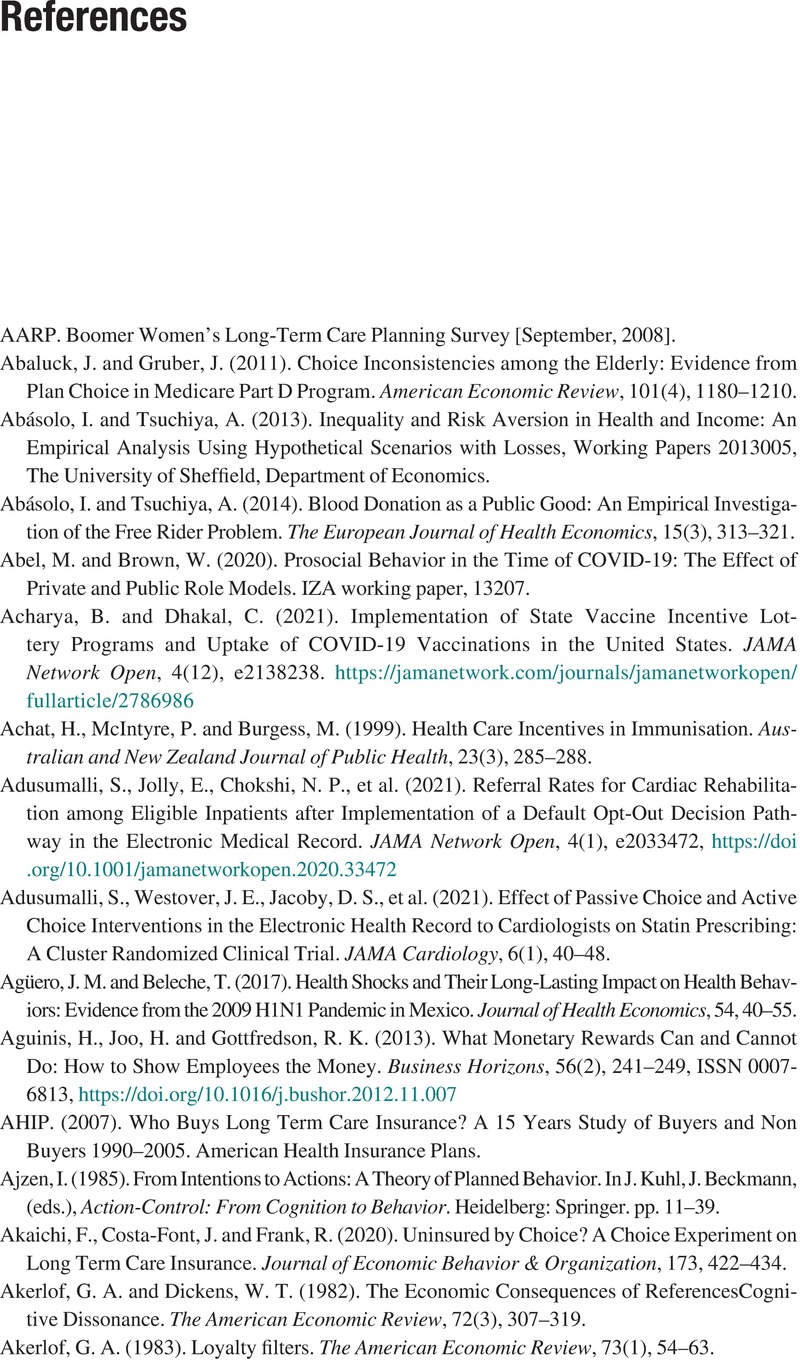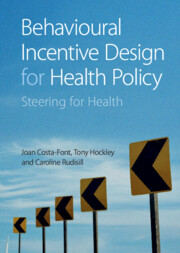Book contents
- Behavioural Incentive Design for Health Policy
- Behavioural Incentive Design for Health Policy
- Copyright page
- Contents
- Figures
- Preface
- Glossary
- 1 Behavioural Incentives and Health
- 2 Behavioural Learning and the Design of Incentives
- 3 Monetary Incentives for Health
- 4 Social Incentives for Health Behaviours
- 5 Nudging for Better Health
- 6 Social Preferences and Health
- 7 Behavioural Incentives for Health Behaviours
- 8 Behavioural Anomalies in the Demand for Health Care
- 9 Behavioural Anomalies in the Healthcare Supply
- 10 Behavioural Health Insurance Uptake
- 11 Ageing and Caregiving Decisions Over Time
- 12 Policy Applications from a Global Perspective
- References
- Index
- References
References
Published online by Cambridge University Press: 18 May 2023
- Behavioural Incentive Design for Health Policy
- Behavioural Incentive Design for Health Policy
- Copyright page
- Contents
- Figures
- Preface
- Glossary
- 1 Behavioural Incentives and Health
- 2 Behavioural Learning and the Design of Incentives
- 3 Monetary Incentives for Health
- 4 Social Incentives for Health Behaviours
- 5 Nudging for Better Health
- 6 Social Preferences and Health
- 7 Behavioural Incentives for Health Behaviours
- 8 Behavioural Anomalies in the Demand for Health Care
- 9 Behavioural Anomalies in the Healthcare Supply
- 10 Behavioural Health Insurance Uptake
- 11 Ageing and Caregiving Decisions Over Time
- 12 Policy Applications from a Global Perspective
- References
- Index
- References
Summary

- Type
- Chapter
- Information
- Behavioural Incentive Design for Health PolicySteering for Health, pp. 177 - 210Publisher: Cambridge University PressPrint publication year: 2023

